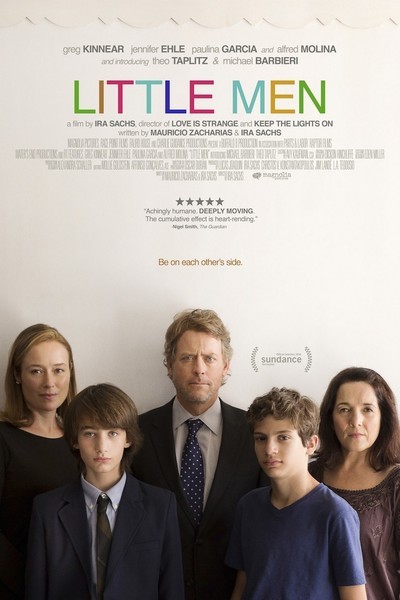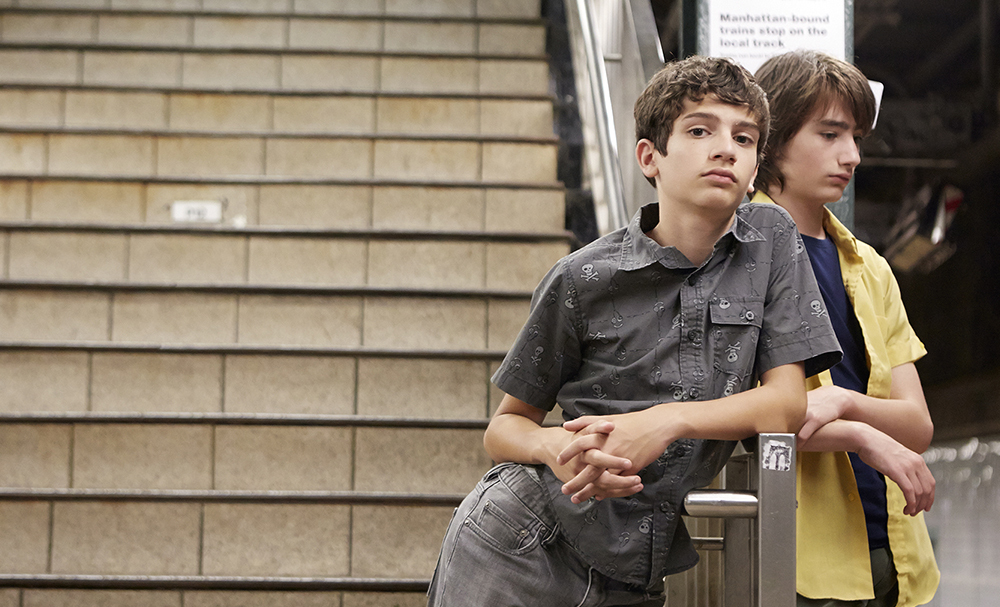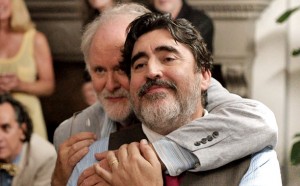Interview: Ira Sachs on “Little Men”
Posted on August 13, 2016 at 6:35 pm

The last time we spoke, you were still a fairly new father. The parents in this film really struggle with their middle school children, especially when they decide to give their parents the silent treatment.
I actually think about the challenges of what it is to be a good parent and that’s something I totally empathize with Greg Kinnear’s character in “Little Men.” And I had thought even the last couple of days how challenging it is not to impose yourself and your own experience and your own ambitions on your children. So what I hope is that my kids in middle school can talk to me and I can listen, but it seems really a hard one. Like to maintain conversation with your kids, to be able to continue to be in dialogue with them. It’s what Greg Kinnear is not successful at in in this film on some level and why he regrets his own choices as a parent. He tried to cover up the tough stuff and I think kids pick up too much for you to do that. When I see parents who are not tortured by the teenage years is because somehow they were able to establish some version of that, some intimacy. Intimacy with your kids is not a given. And probably also to let your kids have their privacy, like not assume that everything is part of your story, and let them have their own stories, that’s what I think my parents did really well.
Tell me about my favorite scene in the movie which was that fantastic apparently improvised scene in the theater class.
Thank you. And thank those actors and kids. Michael Barbieri who plays Tony had gone to the Lee Strasburg Institute to study acting from when he was nine years old and when we shot the film he was 13. That is his acting teacher so they had this kind of warm familiarity. What was important to me in that scene was that the character Tony, his dream is to go to Laguardia High School for the performing arts as an actor and I wanted the audience to know how talented he was so that they could hope for him that he could achieve his dreams. I will tell you that Michael Barbieri has been accepted to Laguardia High School so he will be going there in the fall. That scene reminds me actually of “The Carol Burnett Show” in the sense that the wall drops for a moment and you feel totally included in what’s going on in the performance. I saw clapping during that scene is that that scene really lets the audience in, in a really entertaining way.
And your husband went there, right?
My husband also went there, yes. In a way art has the ability to transform lives in many different ways including a shift in kind of class experience that it can give access to. I
I loved it when Tony said he was reading the Eugene O’Neill play “Ah Wilderness.”
I’m glad you noticed that because I wrote that line and I think it’s one of the funniest in the movie personality. It’s the seriousness of kids. I was a theater kid. I was involved in the Memphis theater growing up and I remember how seriously we took ourselves and how we wanted to be good and all that. Michael has had a very interesting year since this film premiered. He was cast in “The Dark Tower” with Matthew McConaughey and he was just cast in the “Spider-Man” Reboot playing Spider-Man’s best friend. So he’s gone from never acting in a movie to spending eight weeks on a Marvel set and that’s because there’s something inherent, some star talent there.
Greg Kinnear’s character is an actor appearing in a production of Chekhov’s “The Seagull.” Why choose that play as a counterpoint to your story?
Chekhov is the playwright who gives me the permission to focus on the intricacies of everyday life and believe that if I do so with enough rigor and compassion that the stories will be monumental. Really I think that I don’t make small films, I make big films but I made them about the intimate things that happen between people in their everyday lives.
I like the way your films have nice people who have mostly good intentions and but who end up hurting each other. You do it in a very balanced way. And there’s a lot about real estate too I noticed in this one and in your last film, “Love is Strange.” That’s another areas where you Chekhov are alike.
Yes, totally. That’s also Henry James and Edith Wharton and Shakespeare. I mean the questions of home and property and holding on to what they have are the stuff of literature forever really. Oedipus has to go walking, he’s thrown out. These questions are timeless and meaningful. The moral ambiguity I would say, is something that I tried to construct from the screenplay forward. It was important not to stack the cards in anyone’s favor. So the landlord would not be super rich and the tenants would not be super poor. Yhey were both in fact pretty much middle-class families that are fighting for whatever space is left. And I think that creates the kind of suspenseful situation for the audience because they don’t know who to root for.
What I love about Paulina Garcia’s performance is she doesn’t shy away from the ugly, she doesn’t try to sugarcoat her character. This is a woman who is really pushed into the corner and just trying to fight. She’s also trying to protect her son and her livelihood. And she just continues to make some choices, and she continues to make the wrong choices strategically. I have great empathy for that. She used the tools that she has. She is also an actress who is able to sort of inject drama into a scene, you know as soon as you see her that something is off in the story and I think you’ll get unsettled and that’s what the film wants to do because everything unravels in the course of the story.
In the middle of the movie, we see a scene from the Chekhov play. What it was like to essentially direct Chekhov in the middle of all this?
Ira: To be honest it was not the same as what I wanted to achieve in the acting class, where I really wanted you to know this kid had brilliance as an actor. That was not so important for Chekhov. I feel like every small production of Chekhov in a basement in New York City is not stellar but I wanted it to be a good and respectful and I wanted you to understand his investment in it was real and serious.
I think that came across, I thought the detail that really nailed that was the set. It looked exactly like a thoughtful, creative, no budget set. A lot of artistic integrity behind it and no money.
And that’s exactly what it was. We didn’t have a lot of money to put into that scene but wanted it to be very good.
The credits show you’ve got an army of associate producers.
Most of them are people who generously supported the film with their investment. So it’s part of the way that I was able to continue to make films and also to do so truly and independently so that I don’t have one single financer. Instead I have a group of investors who come to the film with lots of different reasons for being involved and believe in me and my autonomy creatively. So it allows me to make very instinctual films.
I’ve begun to think it’s a dress shop like the one in the story and the film can serve as a metaphor to the place of personal and art cinema in our culture in the sense that the numbers don’t really work if you consider capitalism the defining arbiter of value. But if you consider value to be a number of other things including aesthetic, political, social, artistic, then there is a real need and purpose for films like this. But it’s a challenge within the larger structure to hold on.
I run a nonprofit called Queer Art. It was kind of a hobby for six years and then two years ago we formally began to file the 401(c)(3). We support LGBT artists in all disciplines, writers and filmmakers and poets and musicians and really what I believe is if you set up the apparatus which can support the individual artist that’s as significant as a building or putting money in any one film. It’s like a larger apparatus that kind of works the kind of help protect individuality. That’s why it is important for me that films like this find an audience because I think when people see the film they connect to it in a really personal way.





